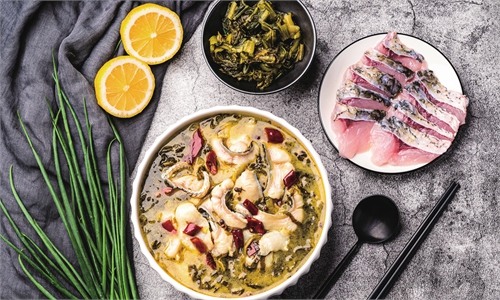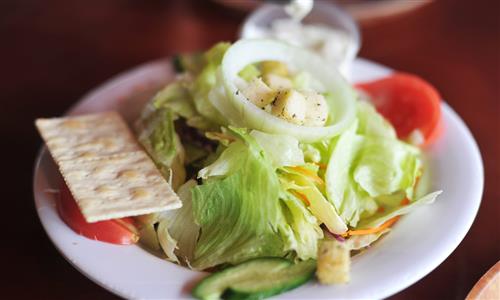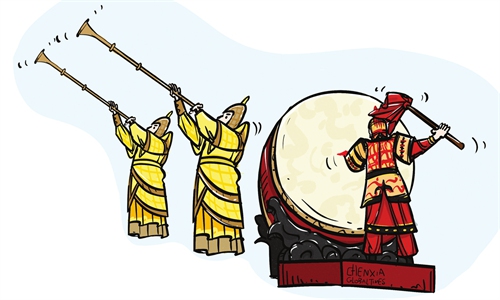ARTS / CULTURE & LEISURE
Red hot chili sauce sought after for Chinese taste

Illustration: Xia Qing/GT
As the holiday season approaches, shoppers are busy creating their gift lists. Among the usual and trendy choices, an unexpected favorite has appeared for a Londoner: China's famous Lao Gan Ma chili sauce.
"I love Lao Gan Ma crispy chili in oil," wrote Tom Kerridge, chef, restaurateur and author, in a recent article by the Guardian about what top chefs and food writers put on their Christmas wish lists. "It's not too expensive, it's super tasty, and it goes with everything - it's on preorder in my basket," said Kerridge.
Founded in 1996 in Guiyang, the capital of Southwest China's Guizhou Province, Lao Gan Ma has grown into one of China's biggest chili sauce producers. Lao Gan Ma creates chili sauces that suit a variety of tastes. This signature product has expanded from its roots in Guizhou to nationwide popularity. And along with Chinese travelers and students going overseas, Lao Gan Ma has been brought to all over the world and entered local food scene. Now it's winning over international palates.
There is even a Facebook page called "The Lao Gan Ma Appreciation Society." Founded by Simon Stahli, an artist and photography teacher from Switzerland, the page now has about 5,000 followers, including homesick Chinese students and Lao Gan Ma's international fans.
While most Chinese pair Lao Gan Ma with rice, noodles and steamed buns, international fans explore unique ways of enjoying the Chinese sauce with Western dishes and ingredients, such as bread, wine and cheese.
"Spicy sauces are already a popular category. In other parts of the world, take the UK for instance, they have their own types of Western-style hot sauces, making this category inherently familiar. With effective promotion, the unique taste of Chinese-style hot sauce understandably can gain recognition and popularity," Zhang Yiwu, a professor of cultural studies at Peking University, told the Global Times.
"Chinese-style hot sauce is delicious, making it easy for international fans to embrace. It's similar to how Chinese cuisine has incorporated cheese into some dishes," Zhang said, explaining how cultural exchanges have taken place and how cultures are interconnected through food.
In Paris, a city known for its wide selection of delicacies, Guo Jinzhang, a Chinese entrepreneur, has successfully opened several shops serving daoxiaomian, or sliced noodles - a traditional dish from Shanxi Province in North China.
"Paris is the pinnacle of Chinese cuisine in Europe, with many Chinese restaurants here offering authentic flavors. The French have a strong enthusiasm for Chinese food. Currently, local customers make up 80 percent of our noodle shops' clientele," Guo told the Global Times.
"Nowadays, many French friends around us have added our noodles to their daily diet," Guo said. "This is our firsthand experience in understanding that food knows no borders."
In Kuala Lumpur, a couple of Sichuan restaurants often attract long lines of customers. In Milan, jianbing guozi (pancake with crispy fried dough sheet) has become a hot item in Chinatown.
The growing global popularity of Chinese food also represents an extension of Chinese cultural and economic influence. According to a report by CNR.cn, the latest data by Frost & Sullivan predicts that by 2026, the overseas Chinese dining market is expected to reach $409.8 billion, presenting a massive economic opportunity for Chinese restaurants, food manufacturers, and brands that are expanding their reach to overseas markets.
"Chinese cuisine has a long history and a broad social foundation. Overseas Chinese communities and Chinese employees in multinational corporations incorporated Chinese food and its culture into local food culture. Additionally, international tourists visiting China have experienced Chinese food firsthand. These factors collectively contribute to the sustained popularity of Chinese food. Its flavors, variety, and categories have become familiar to global consumers," said Zhang.
Chinese cuisine has long served as a comforting reminder of home for overseas Chinese communities, helping them maintain a connection to their cultural roots. A notable example of this culinary adaptation is General Tso's Chicken. The dish appears to possess more popularity in the US than in China. Sweet and just a little bit spicy, the dish combines Chinese culinary techniques with local tastes, resulting in a creation that resonates with both Chinese immigrants and the broader US public.
Every dish, from the fiery Lao Gan Ma chili sauce to delicate dim sum dumplings, carries with it a piece of China's history, philosophy, and traditions. In many ways, Chinese cuisine serves as an ambassador, introducing the world to the rich and diverse Chinese culture through taste.
When people sit down for hotpot or a plate of kung pao chicken, they are not just experiencing a meal - they are engaging with a culture in which food holds special significance.
The Chinese saying, "To the people, food is heaven" was first recorded in The Records of the Grand Historian 2,000 years ago, and it is still true today. While offering a taste of China's rich heritage to millions of people worldwide, Chinese food is also bringing people together and fostering mutual appreciation across cultures.
The author is a reporter with the Global Times. life@globaltimes.com.cn



